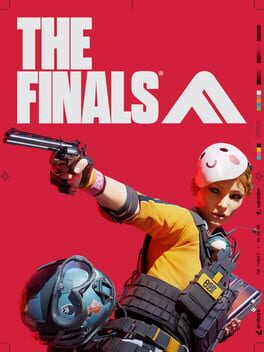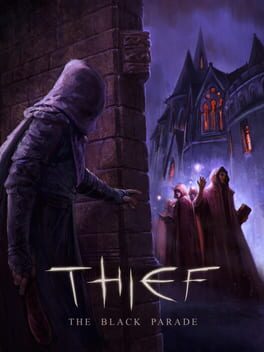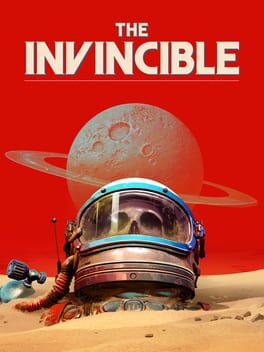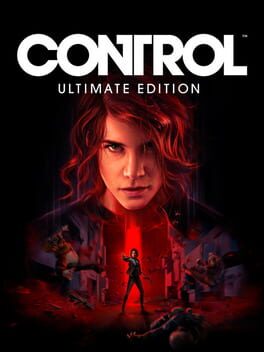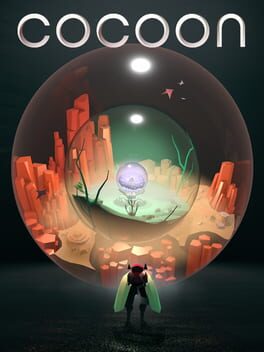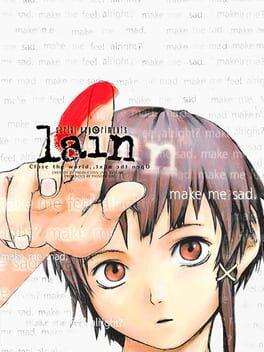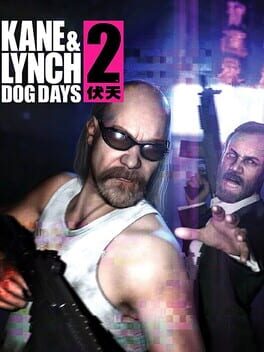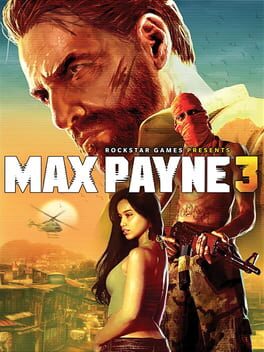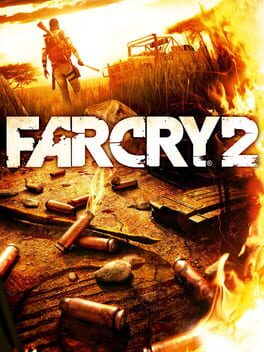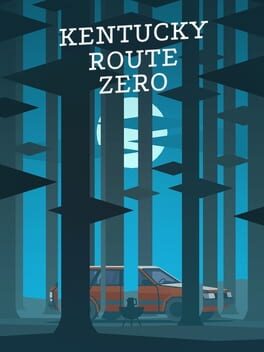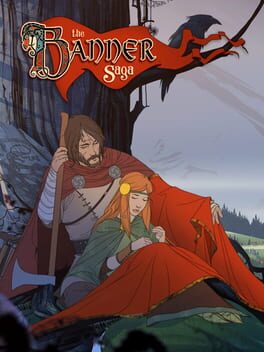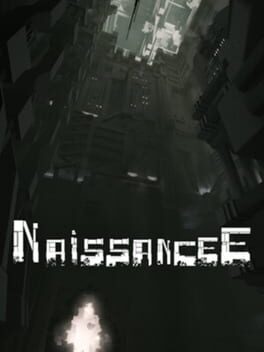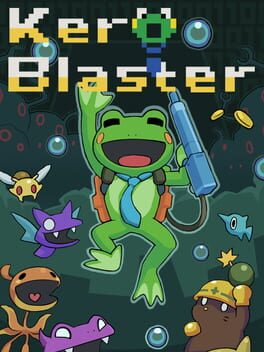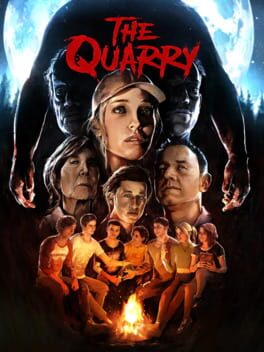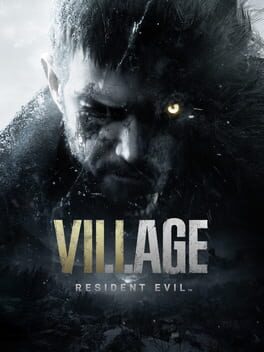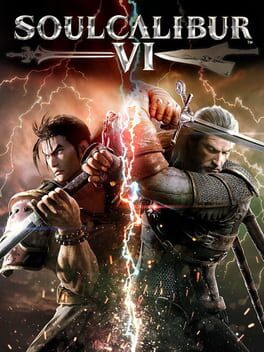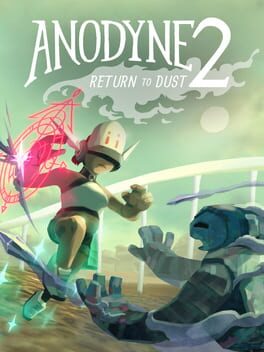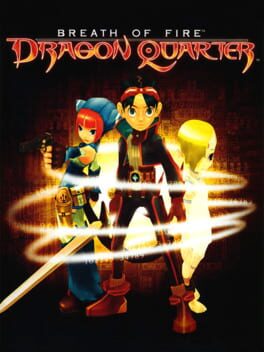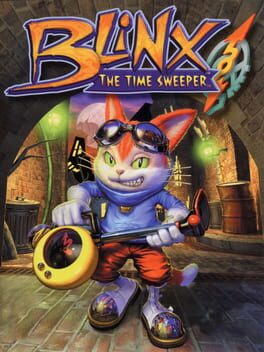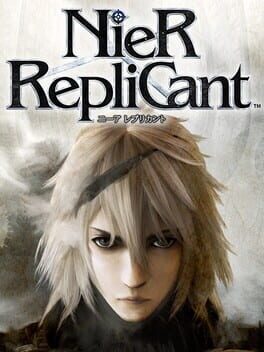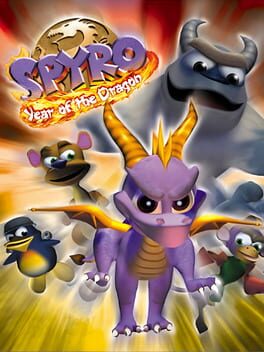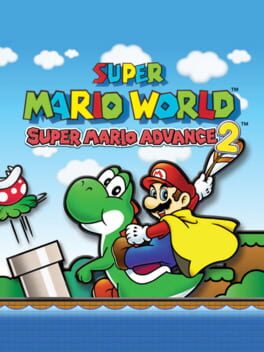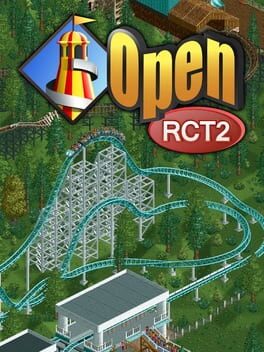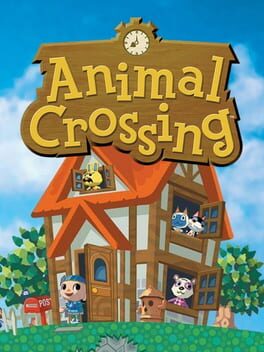108 reviews liked by minusforever
Mars After Midnight
2024
a sublime experience from the great lucas pope. distills the gameplay essence of papers please into a simple, comedic form and it works wonderfully. specifically, the idea of hosting a community event and making sure that the right people attend to get the help they need. once i got into the rhythm of it i found myself giddy to open up the door's hatch and take a look at who was trying to get in. there's a ton of fun events and gimmicks involved and i enjoyed the planning, but i do think there's a tad bit too many events in the mars colony section. the subtle character touches for our 3 eyed martian and his robot companion leaves me wanting more from them. i adored when the robot began dreaming about his teddy bear.
at the end, there's a slight but eloquent touch, to remind people to do this sort of "care" in real life, and i appreciated it.
not going to be a playdate seller by any means, but if you have a playdate, this is an easy recommendation.
at the end, there's a slight but eloquent touch, to remind people to do this sort of "care" in real life, and i appreciated it.
not going to be a playdate seller by any means, but if you have a playdate, this is an easy recommendation.
The Finals
2023
Some cool tech & snappy gameplay trapped in Free-to-play hell. We talk a lot about games being tied to & shaped by their technology but little about how they’re shaped, and hollowed out, by their revenue model: GaaS “living games” are released (and shut down) before there is any life in them.
The Finals contains the movement & sugary energy of nu-battlefield (post-Battlefield 1) wrapped in the most horrid vibes: Forza Horizon-esque npcs at their infinite party, Siege/Valorant/Hyperscape-adjacent esports mush. Embark has managed to make Unreal resemble Frostbite, including impressive physics & destruction that echoes the chaos of bad company 2, but it’s all wasted here.
Even for a tight competitive shooter, this needs a more fleshed out setting, either leaning further into the surreal elements (bodies exploding into coins) or situating it in a world that is more than a watered down squid-game/mirror's edge/DICE's entire catalog. Feels like a very polished tech-demo and I refuse to play 100 hours to unlock interesting mechanics or outfits, which has led to every character running around in the default tracksuit/pyjamas. And don't get me started on the AI voices.
I am cautiously optimistic about embark’s other beautiful but empty sci-fi project, ARC raiders, which has seemingly transformed into yet another extraction shooter.
The Finals contains the movement & sugary energy of nu-battlefield (post-Battlefield 1) wrapped in the most horrid vibes: Forza Horizon-esque npcs at their infinite party, Siege/Valorant/Hyperscape-adjacent esports mush. Embark has managed to make Unreal resemble Frostbite, including impressive physics & destruction that echoes the chaos of bad company 2, but it’s all wasted here.
Even for a tight competitive shooter, this needs a more fleshed out setting, either leaning further into the surreal elements (bodies exploding into coins) or situating it in a world that is more than a watered down squid-game/mirror's edge/DICE's entire catalog. Feels like a very polished tech-demo and I refuse to play 100 hours to unlock interesting mechanics or outfits, which has led to every character running around in the default tracksuit/pyjamas. And don't get me started on the AI voices.
I am cautiously optimistic about embark’s other beautiful but empty sci-fi project, ARC raiders, which has seemingly transformed into yet another extraction shooter.
Starfield
2023
Struggled to put together my thoughts on this. Escalates from mediocre to engaging somewhere about ten hours in, followed immediately by an overwhelming sense of emptiness. All of Bethesda's quirks are here in the worst ways: dead mannequin npcs, clumsy systems that don’t quite cohere, a terrible main quest that drifts across the flimsy surface of alien artifact sci-fi stories.
But something worse about this one is the lack of texture. There are very few freaks, minor discoveries off the beaten path, companions that make you feel something (Nick <3). Everyone is so nice, the politics completely empty. Cities are so strange and dead, with sound design attempting to evoke the density of Night City but lacking any real scale - the abstraction of a fantasy setting no longer here to distract you from asking: why is this just one square block?
This must’ve been a monumental effort to produce, but why dedicate seven years to creating a pale echo of The Expanse, Mass Effect & Firefly? There are hints of another game in here - one with meaningful travel and fewer, more fleshed out worlds - that was abandoned prior to shifting to this smooth, soulless, bloated final form.
But something worse about this one is the lack of texture. There are very few freaks, minor discoveries off the beaten path, companions that make you feel something (Nick <3). Everyone is so nice, the politics completely empty. Cities are so strange and dead, with sound design attempting to evoke the density of Night City but lacking any real scale - the abstraction of a fantasy setting no longer here to distract you from asking: why is this just one square block?
This must’ve been a monumental effort to produce, but why dedicate seven years to creating a pale echo of The Expanse, Mass Effect & Firefly? There are hints of another game in here - one with meaningful travel and fewer, more fleshed out worlds - that was abandoned prior to shifting to this smooth, soulless, bloated final form.
Thief is methodically mapping space from the shadows. Thief is exploring an architecture of absurd, arcane labyrinths. Thief is rotoscoped & roughly layered 90s FMVs scored with industrial beats.
The Black Parade, a fan campaign mod for the now 25 year old Thief: The Dark Project, brings Thief into the present as an act of alternate-history building. Within the tight restrictions of the Dark Engine, this imagines what Thief could be given decades of further contemplation, or in this case, seven years of development led by famed modder Skacky.
The Black Parade echoes iconic levels: here is a mansion, or a sprawling, vertical city, a rain-swept church, a plague stricken derelict district. But everything is now denser, more honeycombed, more varied. At times you’ll be lost, but they’ve paid special attention to every room’s volume, materials, light and colour, so that your mental map is as rich as your potential targets.
Thief separates itself from other Im-Sims by refusing to be an everything-game (Deus-Ex). You are a thief. You can’t fight for shit. You can jump from carpet to carpet and knock someone out if you’re good, but you can’t do much about two guards on your tail. Thief is narrowly designed to do one thing. The Black Parade knows this and is as close to Thief 3 (5?) that we’ll ever get.
The Black Parade, a fan campaign mod for the now 25 year old Thief: The Dark Project, brings Thief into the present as an act of alternate-history building. Within the tight restrictions of the Dark Engine, this imagines what Thief could be given decades of further contemplation, or in this case, seven years of development led by famed modder Skacky.
The Black Parade echoes iconic levels: here is a mansion, or a sprawling, vertical city, a rain-swept church, a plague stricken derelict district. But everything is now denser, more honeycombed, more varied. At times you’ll be lost, but they’ve paid special attention to every room’s volume, materials, light and colour, so that your mental map is as rich as your potential targets.
Thief separates itself from other Im-Sims by refusing to be an everything-game (Deus-Ex). You are a thief. You can’t fight for shit. You can jump from carpet to carpet and knock someone out if you’re good, but you can’t do much about two guards on your tail. Thief is narrowly designed to do one thing. The Black Parade knows this and is as close to Thief 3 (5?) that we’ll ever get.
Californication
2022
i was like 5 years old when i first heard Californication. it made me bug my parents for years to get guitar lessons just to learn how to play it. i kinda did! i recorded a scuffed version of the Can't Stop video with my brother (and a camcorder). the Californication video, at least nowadays, represents to me an idealization of video game aesthetics in a musical dreamscape. music videos of this era tend to be very surreal; the fake game the band was in was just an expression of that trend, but it still easily captured my mind.
the video does not represent a videogame that makes sense. at all. it breaks free from any mechanics and the sense of player input because it's CGI, and it was made with that in mind - not with the intent to create a simulacrum of a videogame. it made me, as a child, go insane about how this music video would work as a real game. even when i was a little kid, it didn't make any sense at all! but it was one of the main things that made me think about how i see games.
yunno, i thought about how those very contextually sensitive animations playing while Flea dodges and jumps around LA people wouldn't make sense in a game played with a controller. "not even GTA can do this!", i thought. that's what made it so dreamlike - the MV emulates videogame aesthetic and UI with graphics that didn't make sense in any console at the time and completely incoherent "gameplay". it's how it feels to dream that you're inside a game.
transforming this into even a slightly playable game, as neat as it is, can't evoke the same feelings that the MV does. the detailed minimap, slightly freeform sections, and the lack of the LA cityscape and iconography make this game too "real". it can't exist. it's based on something that is remarkable specifically because it doesn't exist.
but like, this is still good though. cool effort! just made me think a bit.
the video does not represent a videogame that makes sense. at all. it breaks free from any mechanics and the sense of player input because it's CGI, and it was made with that in mind - not with the intent to create a simulacrum of a videogame. it made me, as a child, go insane about how this music video would work as a real game. even when i was a little kid, it didn't make any sense at all! but it was one of the main things that made me think about how i see games.
yunno, i thought about how those very contextually sensitive animations playing while Flea dodges and jumps around LA people wouldn't make sense in a game played with a controller. "not even GTA can do this!", i thought. that's what made it so dreamlike - the MV emulates videogame aesthetic and UI with graphics that didn't make sense in any console at the time and completely incoherent "gameplay". it's how it feels to dream that you're inside a game.
transforming this into even a slightly playable game, as neat as it is, can't evoke the same feelings that the MV does. the detailed minimap, slightly freeform sections, and the lack of the LA cityscape and iconography make this game too "real". it can't exist. it's based on something that is remarkable specifically because it doesn't exist.
but like, this is still good though. cool effort! just made me think a bit.
The Invincible
2023
The core element of Lem’s 1964 novel they’ve captured is the planet of Regis III, with its pastel pink dunes and liquid rock formations, an intoxicating, vivid landscape. The plot is tangential to the novel, and part of the mystery is how it fits in with Lem’s tale of advanced military tech facing up against an inexplicable alien force.
But unfortunately (about 7 years out from Firewatch and 6 from SOMA), they really aren’t doing enough here to distinguish this from numerous hollow walking sims, despite the painterly landscapes and luxurious retro-futuristic tech. There’s little negative space to soak in the planet's surface, only constant muttering to yourself or your weirdly annoyed boss off-planet. Overlapping dialogue and abrupt popups disrupt gameplay constantly, and no amount of contextual animations can feel like meaningful interactions.
Puzzles are almost an afterthought and at most you will contend with occasional navigation challenges through samey looking caves. Outer Wilds and Subnautica have demonstrated how alien archeology and space exploration can be distilled into tense & dynamic gameplay, and in comparison this feels a little archaic. I look forward to more attempts at Lem’s work (possibly a psychological horror take on Solaris!?) and recommend experiencing this for the artwork alone (& a climax featuring the largest rocket of all time 0::).
But unfortunately (about 7 years out from Firewatch and 6 from SOMA), they really aren’t doing enough here to distinguish this from numerous hollow walking sims, despite the painterly landscapes and luxurious retro-futuristic tech. There’s little negative space to soak in the planet's surface, only constant muttering to yourself or your weirdly annoyed boss off-planet. Overlapping dialogue and abrupt popups disrupt gameplay constantly, and no amount of contextual animations can feel like meaningful interactions.
Puzzles are almost an afterthought and at most you will contend with occasional navigation challenges through samey looking caves. Outer Wilds and Subnautica have demonstrated how alien archeology and space exploration can be distilled into tense & dynamic gameplay, and in comparison this feels a little archaic. I look forward to more attempts at Lem’s work (possibly a psychological horror take on Solaris!?) and recommend experiencing this for the artwork alone (& a climax featuring the largest rocket of all time 0::).
Frequently enthralling in theory, occasionally stumbling in practice, yet incredibly beguiling in retrospect. Like Alan Wake, this is a game that toys with spooky contradictions and the grueling concept of ‘process’. Yet unlike that game (besides this being actually good), this is less a twisting narrative about the complicated and often defeating journey of creating art and deconstructing success than one about the sheer mundane becoming extraordinary and introducing order from such a chaotic dynamic. Elements and objects of everyday existence are touched with the supernatural and the obvious American response to this is to transform these newfound and wondrous discoveries into bureaucratic nonsense; where even the forces of capitalist labor inevitably puncture. Remedy stretches these ideas to its absolute limit, nothing feeling shortchanged through the extensive notes and tapes littered around the map. While I think the game is afraid to allow the player to deduce these simplistic connections (Jesse being a talkative cipher yet largely devoid of personality) it’s pretty wild that a AAA title was allowed to be this devoted to such an overtly antagonistic and distinct aesthetic. The brutalist design here is utterly astonishing in how it invites the player to partake in the haywire destruction of office and industrial spaces; witnessing antiquated practices and oppressive structures devolve into otherworldly abstraction. Perhaps that’s the greatest credit I could owe to Remedy despite the overwritten (yet unsentimental) nature of their creation. Anyways the DLC expansions here are rather bloated and lack the grace and active sense of visual innovation that the base game carried, and the overall experience falls into the familiar trapping of chaining endless enemy encounters as its climax in lieu of something as bold as the first two acts. Ultimately, it’s a game I haven’t stopped thinking about while and since playing. The playful and surreal world Remedy has intricately crafted here shows vast promise and the slick gameplay loop is as addictive and deeply satisfying as it is explosively chic.
Alan Wake II
2023
WAKE!
A great and absurdly overwritten, overdesigned & ploddingly paced game. Gratuitous exposition beating you down & down & down until Garth Marenghi (Wake) can escape the darkplace, a dim Mauve Zone/Silent Hill analog. Drawing from Twin Peaks: The Return, The Night House, True Detective & a little bit of Vanishing on 7th Street(?!!), Sam Lake is so buried under the weight of his influences that he rarely finds his own voice.
Contained in here is an efficient, stripped-down survival horror game, full of winding paths, plenty of fleshed-out re-visitation of areas that make Bright Falls a real sick Place to be by the end. Saga’s mindplace asks you to build your evidence to produce your own objectives (often to an insane degree of detail, where you find out you must speak to someone, as you are in that very moment standing in front of them). Rendering every objective and clue a physical, tactile object does align the player with the characters - who are (especially Lake) idiots.
Remedy have inverted the small puzzle-intermissions from Control into the entire structure of this game, all winding, looping, shifting architecture (a trope they indulge in here with glee). Enemies are relatively bland but encountered infrequently enough it was almost a non-issue (compared to the excessive waves of Control). Many of the kitsch FMV sequences were underwhelming, but it was where they were layered directly into the world that it worked for me, transparent membranes of Max Payne’s Lake/James McCaffrey in silhouette just hanging out and talking complete nonsense (I love him).
Honestly this is a case where the energy, humour and confidence of this overwhelming mess tips into endearing. Not to mention the absolutely beautiful soft, dimly-lit spaces in here that I'd be happy living in (especially the retirement home and Nu York apartment). Between this, Death Stranding & recent RE titles I begrudgingly accept that sometimes photorealism is valid & not just dull marketing for graphics cards. WAKE
Edit: RIP James McCaffrey! <3
A great and absurdly overwritten, overdesigned & ploddingly paced game. Gratuitous exposition beating you down & down & down until Garth Marenghi (Wake) can escape the darkplace, a dim Mauve Zone/Silent Hill analog. Drawing from Twin Peaks: The Return, The Night House, True Detective & a little bit of Vanishing on 7th Street(?!!), Sam Lake is so buried under the weight of his influences that he rarely finds his own voice.
Contained in here is an efficient, stripped-down survival horror game, full of winding paths, plenty of fleshed-out re-visitation of areas that make Bright Falls a real sick Place to be by the end. Saga’s mindplace asks you to build your evidence to produce your own objectives (often to an insane degree of detail, where you find out you must speak to someone, as you are in that very moment standing in front of them). Rendering every objective and clue a physical, tactile object does align the player with the characters - who are (especially Lake) idiots.
Remedy have inverted the small puzzle-intermissions from Control into the entire structure of this game, all winding, looping, shifting architecture (a trope they indulge in here with glee). Enemies are relatively bland but encountered infrequently enough it was almost a non-issue (compared to the excessive waves of Control). Many of the kitsch FMV sequences were underwhelming, but it was where they were layered directly into the world that it worked for me, transparent membranes of Max Payne’s Lake/James McCaffrey in silhouette just hanging out and talking complete nonsense (I love him).
Honestly this is a case where the energy, humour and confidence of this overwhelming mess tips into endearing. Not to mention the absolutely beautiful soft, dimly-lit spaces in here that I'd be happy living in (especially the retirement home and Nu York apartment). Between this, Death Stranding & recent RE titles I begrudgingly accept that sometimes photorealism is valid & not just dull marketing for graphics cards. WAKE
Edit: RIP James McCaffrey! <3
Cocoon
2023
A smooth, polished object, to be expected from members behind Limbo & Inside. Much more of a pure puzzle game than cinematic platformer, it always feels expensive, atmospheric & opaque. Many puzzles come down to ‘place box in the right order’ & rely on your short term memory's ability to hold the layered levels in your mind (failing this, running back thru over and over, observing the puzzle layout).
The world full of biological machinery and an ambiguous alien industry recalls the stronger elements of Scorn (is this cosy scorn?) but I never felt the puzzles connected with the world in a meaningful way outside of the core ‘carrying around the level’ mechanic - which is always satisfying, but never too interesting. I do admire the inexplicable difficulty spikes (bullet-hell bosses?!) that do lend some much needed friction, but for a little guy with wings, the game is remarkably rigid, lacking the playful physics & movement of Playdead’s work.
The world full of biological machinery and an ambiguous alien industry recalls the stronger elements of Scorn (is this cosy scorn?) but I never felt the puzzles connected with the world in a meaningful way outside of the core ‘carrying around the level’ mechanic - which is always satisfying, but never too interesting. I do admire the inexplicable difficulty spikes (bullet-hell bosses?!) that do lend some much needed friction, but for a little guy with wings, the game is remarkably rigid, lacking the playful physics & movement of Playdead’s work.
Note: This review is taken from my Medium page, where I wrote about it as part of a list about my favourite media that I experienced in 2022. It's written for an audience that is unfamiliar with the game, so it's more expository than most of my reviews.
This PS1 game was developed around the same time as its much more well-known anime as part of a multimedia project. It is not an adaptation of the anime, but rather its own story, to the point that it does not share continuity with the anime. For those unfamiliar with Serial Experiments Lain, the anime is a work of sci-fi set in the then-present day. It delves into the emergence of the internet and its effect on the way we perceive reality and identity. It’s held up remarkably well and I would still position it as the best work of art about the internet in general. The game deals with similar themes but takes things in a much more psychological direction. It’s structured as a database where you can listen to audio of therapy sessions, read diary entries, watch short video clips and listen to audio of the therapist’s clinical diagnoses. As you may expect from that description, the game’s premise is about the character Lain undergoing therapy. It reverses the dynamics from the anime — the anime is primarily about the sci-fi concepts relating to the Internet and digital consciosuness, while Lain’s mental illness and alienation are secondary elements. Of course there’s plenty of intersection between the two, but the anime’s conclusion turns her characterisation into a more abstract one. The game’s story is much more grounded and dives deep into the psychological dynamics between Lain and her therapist Touko. Touko is a game-only character written with as much depth as Lain, with her insecurities and changes in persona being impressively realised. Both characters descend into despair in a way that is uncomfortably slow and realistic. I have a high tolerance for upsetting material in art, but this one left me very shaken. I would recommend going into this game knowing that it will pull you into the darkest parts of the characters’ headspace and that it does not offer catharsis at the end.
While I’m calling this a game for convenience, this is one of those works which might not fit into any medium. When I say it isn’t a game, I mean it lacks gameplay, not that it just has limited gameplay. Your only choices in the game are the order in which you access files (and even this is heavily limited, as many files only become accessible as you go through the game) — you have about as much influence over the narrative as you do with a book or film. Because the game is so focused on audio files, it is perhaps closest to the medium of audio drama, but the database structure fragments the narrative completely. The presentation remains incredibly important. The separation of the files conveys one of Lain’s primary themes — that our concept of the self is never stable and constantly being split by circumstance. We see a completely different Touko between her therapy sessions with Lain, her personal diary entries and her clinical diagnosis. The points where these personae intertwine are when Touko is at her least stable, showing her lack of control over her own self. The process of navigating and accessing the files also gives the player space to consider their own role in their consumption of the narrative. I felt a sense of voyeurism due to my role in accessing files of material that should be private, and it’s unlikely I would have felt this guilt if it were presented as a standard audio drama. Finally, the database structure builds the feeling that the game’s narrative has already happened (as opposed to the typical form of games that narratively operate in the present tense) and that you’re traversing through the digital ghosts of these characters. It’s an incredibly haunting experience.
The game’s obscurity comes down to it being a PS1 exclusive that was never released outside of Japan, while the anime got a wide enough release to gain a cult following. Fortunately, it has become much more accessible through a fanmade port of the game for web browsers called lainTSX. This is how I played the game, and I found it worked much better than trying an emulator. Despite video games being a relatively new medium, they tend to be poorly preserved by their distributors. This often leaves dedicated fans as the ones who preserve this work and allow it to continue being experienced. On one hand, I’m moved by how some people are passionate enough about the art they love to do this work, but on the other, I wish that the work's preservation wouldn’t be left to the unpaid labour of fans. Regardless, I have great respect for the lainTSX team for allowing this game to be played by all, and I hope their work leads to a greater appreciation for it. The game is not just a footnote to the Lain anime, but a brilliant work in its own right.
This PS1 game was developed around the same time as its much more well-known anime as part of a multimedia project. It is not an adaptation of the anime, but rather its own story, to the point that it does not share continuity with the anime. For those unfamiliar with Serial Experiments Lain, the anime is a work of sci-fi set in the then-present day. It delves into the emergence of the internet and its effect on the way we perceive reality and identity. It’s held up remarkably well and I would still position it as the best work of art about the internet in general. The game deals with similar themes but takes things in a much more psychological direction. It’s structured as a database where you can listen to audio of therapy sessions, read diary entries, watch short video clips and listen to audio of the therapist’s clinical diagnoses. As you may expect from that description, the game’s premise is about the character Lain undergoing therapy. It reverses the dynamics from the anime — the anime is primarily about the sci-fi concepts relating to the Internet and digital consciosuness, while Lain’s mental illness and alienation are secondary elements. Of course there’s plenty of intersection between the two, but the anime’s conclusion turns her characterisation into a more abstract one. The game’s story is much more grounded and dives deep into the psychological dynamics between Lain and her therapist Touko. Touko is a game-only character written with as much depth as Lain, with her insecurities and changes in persona being impressively realised. Both characters descend into despair in a way that is uncomfortably slow and realistic. I have a high tolerance for upsetting material in art, but this one left me very shaken. I would recommend going into this game knowing that it will pull you into the darkest parts of the characters’ headspace and that it does not offer catharsis at the end.
While I’m calling this a game for convenience, this is one of those works which might not fit into any medium. When I say it isn’t a game, I mean it lacks gameplay, not that it just has limited gameplay. Your only choices in the game are the order in which you access files (and even this is heavily limited, as many files only become accessible as you go through the game) — you have about as much influence over the narrative as you do with a book or film. Because the game is so focused on audio files, it is perhaps closest to the medium of audio drama, but the database structure fragments the narrative completely. The presentation remains incredibly important. The separation of the files conveys one of Lain’s primary themes — that our concept of the self is never stable and constantly being split by circumstance. We see a completely different Touko between her therapy sessions with Lain, her personal diary entries and her clinical diagnosis. The points where these personae intertwine are when Touko is at her least stable, showing her lack of control over her own self. The process of navigating and accessing the files also gives the player space to consider their own role in their consumption of the narrative. I felt a sense of voyeurism due to my role in accessing files of material that should be private, and it’s unlikely I would have felt this guilt if it were presented as a standard audio drama. Finally, the database structure builds the feeling that the game’s narrative has already happened (as opposed to the typical form of games that narratively operate in the present tense) and that you’re traversing through the digital ghosts of these characters. It’s an incredibly haunting experience.
The game’s obscurity comes down to it being a PS1 exclusive that was never released outside of Japan, while the anime got a wide enough release to gain a cult following. Fortunately, it has become much more accessible through a fanmade port of the game for web browsers called lainTSX. This is how I played the game, and I found it worked much better than trying an emulator. Despite video games being a relatively new medium, they tend to be poorly preserved by their distributors. This often leaves dedicated fans as the ones who preserve this work and allow it to continue being experienced. On one hand, I’m moved by how some people are passionate enough about the art they love to do this work, but on the other, I wish that the work's preservation wouldn’t be left to the unpaid labour of fans. Regardless, I have great respect for the lainTSX team for allowing this game to be played by all, and I hope their work leads to a greater appreciation for it. The game is not just a footnote to the Lain anime, but a brilliant work in its own right.
28 lists liked by minusforever
by zachmaycry |
15 Games
by zachmaycry |
30 Games
by zachmaycry |
27 Games
by ohcalypsoh |
30 Games
by thehotrock |
24 Games
by Ardwyw_mp3 |
270 Games
by xeivious |
49 Games
by xeivious |
26 Games

